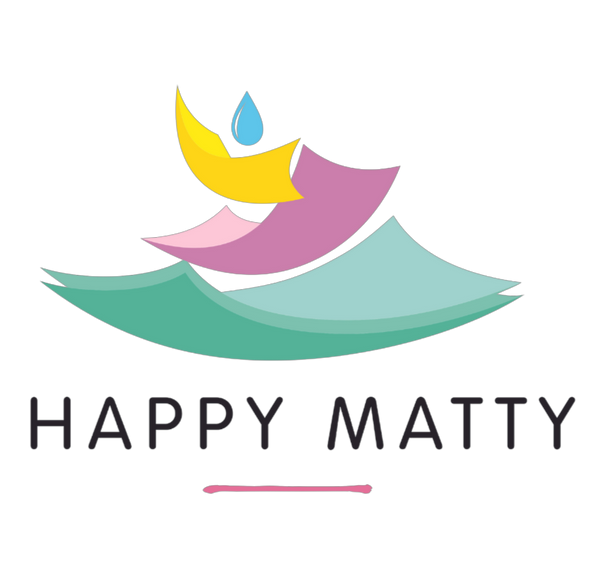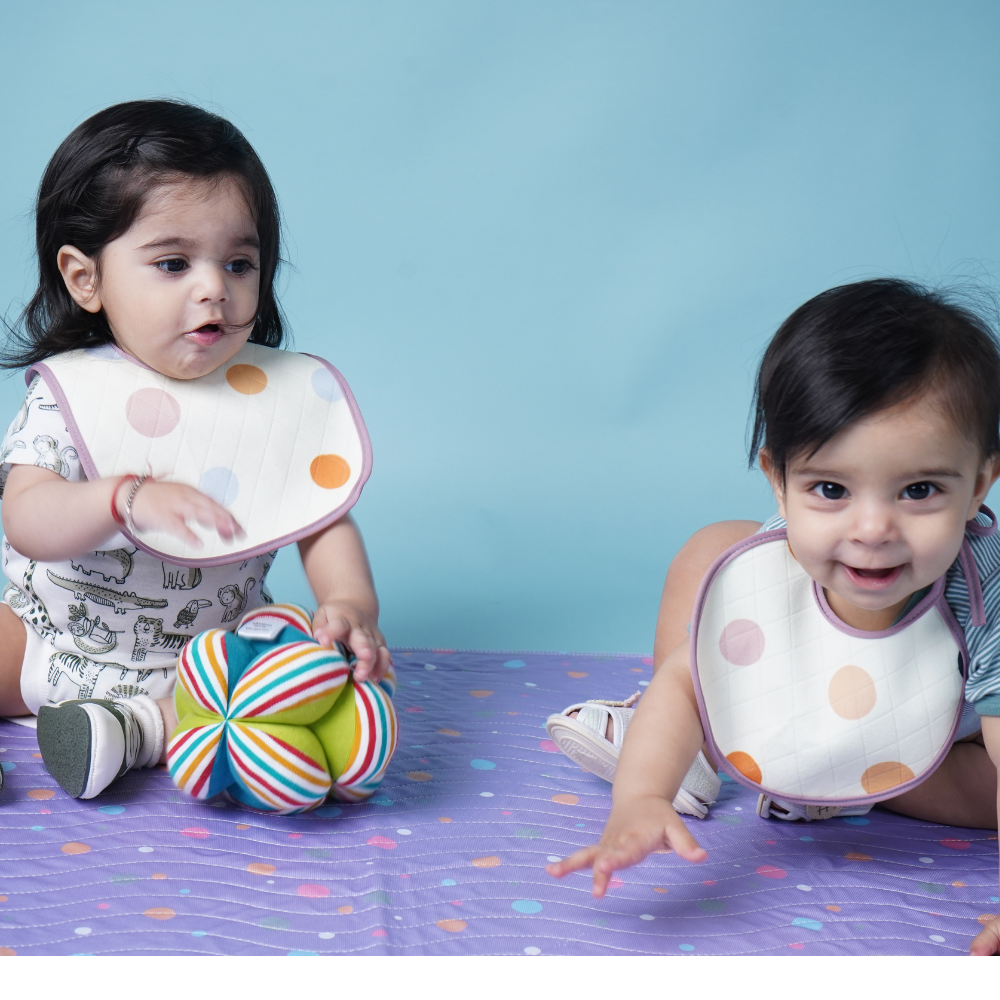There’s something undeniably heart-melting about watching your baby explore the world—one spoonful of mashed banana at a time. But as any parent will tell you, with each bite comes an inevitable splatter, drool drip, or milk trail. Bibs, then, aren’t just accessories—they’re little lifesavers, catching everything your baby throws their way (quite literally). But what happens when those adorable bibs begin to look less cute and more… well, crusty? If you’re investing in quality bibs—especially the kind from trusted brands like Happy Matty—you want to make sure they last. Let’s dive into how you can wash and maintain your baby’s bibs so they keep doing their job, and looking good, for the long haul.
Understanding Baby Bib Fabric: Why Material Matters
Before you even get to the washing machine, take a moment to think about what your baby’s bib is made of. Material matters. A lot. Cotton bibs are soft and breathable, perfect for daily dribbles. Muslin bibs offer a lightweight option that dries fast and is gentle on sensitive skin. Then there are the ultra-absorbent kinds—like those featured at Happy Matty—designed to wick away moisture quickly and keep baby dry.
Each material has its quirks. Some are prone to shrinking, others to staining. Understanding what you’re dealing with helps you treat each bib with the care it deserves. For instance, the ultra-soft cotton used by Happy Matty holds its shape and plush feel even after multiple washes, but only if cared for properly.
The First Wash: Start Gentle
When you bring home a new set of bibs, it’s tempting to use them straight out of the package, but resist the urge. Your baby’s skin is delicate, and so the very first wash is crucial. Wash new bibs in cold or lukewarm water with a gentle, fragrance-free detergent. Avoid fabric softeners—they can coat fabric fibers and reduce absorbency, which is the last thing you want when dealing with drool rivers or juice spills.
Air-drying bibs the first time (and often after that) helps maintain the texture and integrity of the material. If you absolutely must use the dryer, keep the heat low and remove them promptly to prevent any shrinkage or warping.
Tackling Tough Stains Like a Pro
Let’s be honest—no bib goes untouched by stains. Carrot puree, beetroot mash, blueberries… baby foods seem to have been engineered specifically for maximum staining potential. But here’s where your maintenance routine can make a world of difference.
The golden rule? Treat stains as quickly as possible. Don’t let them sit and sink in. Rinse bibs under cold water immediately after mealtime if possible. For more stubborn patches, a paste made of baking soda and water rubbed gently on the spot works wonders. You can also pre-soak bibs in a mixture of warm water and a baby-safe oxygen-based bleach for around 15 to 30 minutes before washing.
Happy Matty’s bibs, for example, are designed with durability in mind. Their colorfast, high-quality prints don’t fade easily, so treating spots won’t compromise their visual charm. Just make sure to avoid harsh chemicals that can weaken fabric threads or cause irritation for your baby.
Machine Washing Without Damage
You’ve probably got a laundry basket that never empties, and it’s tempting to toss bibs in with the rest of the clothes. Resist that temptation, at least for the bibs. Baby garments, especially bibs, should ideally be washed separately or with other baby clothing to avoid contact with abrasive fabrics like denim or zippers that can snag the material.
Use a gentle cycle with cold or lukewarm water. High heat can damage waterproof layers, loosen stitching, and cause premature wear and tear. Choose a baby-specific detergent or any mild, fragrance-free variety that’s free from brighteners, phosphates, or bleach.
For added protection, place the bibs in a mesh laundry bag. It may seem like a small step, but it shields them from being stretched or misshapen during the wash. Remember, Happy Matty bibs are crafted to last—but a little extra care goes a long way in preserving their softness and functionality.
Drying Done Right
How you dry your baby’s bibs can either stretch their life—or shorten it drastically. While tossing them in the dryer may seem convenient, especially on busy days, air drying remains the gold standard. It keeps the fibers strong and maintains the shape.
If you must use a dryer, opt for a low tumble setting and remove the bibs while they’re still slightly damp. Lay them flat or hang them to finish drying. This prevents unnecessary strain on the seams and avoids that stiff, overcooked texture some fabrics get when overdried.
Some bibs come with waterproof backings or lining (especially in the case of drool bibs), which can warp or bubble under high heat. Drying them naturally ensures the water-resistant layer remains intact and functional.
Avoiding the Mold and Mildew Trap
Here’s a sneaky issue many parents don’t think about until it’s too late: mold. Baby bibs are usually wet, whether from milk, water, or the infamous drool. If you’re in a rush and throw a damp bib into the laundry hamper, you’re basically inviting mildew to the party.
Make it a rule to dry bibs before tossing them in the hamper, even if you’re planning to wash them the same day. Hang them by a sunny window or over the edge of the crib (as long as baby isn’t napping). Mold doesn’t stand a chance against sunlight and fresh air.
Also, avoid storing bibs in airtight containers unless you’re absolutely sure they’re bone dry. Fabric that retains even a bit of moisture can turn musty quickly—and nobody wants that near a baby’s face.
Rotate and Replace Strategically
No matter how diligently you wash and dry, bibs aren’t invincible. Frequent use leads to wear and tear—especially when you're using them during feedings multiple times a day. That’s why rotating your bib stash is a smart move.
Having a generous rotation keeps any one bib from being overused and overworn. It gives each piece time to rest between washes and allows you to spot signs of fabric fatigue early. You know the signs—loose stitching, thinning material, faded colors, or that weird permanent crunchiness from repeated high-heat drying.
Bibs from Happy Matty are built for durability, but even the best quality fabric has a shelf life. Regularly evaluating your bibs ensures your baby always has clean, effective ones in the rotation.
Storing Clean Bibs the Hygienic Way
Once bibs are washed and dried, storage becomes your next priority. Tossing them in a drawer might seem fine, but consider how you can keep them cleaner and more organized. Choose a breathable storage bin or fabric organizer. Avoid plastic containers unless they have air vents, as trapped humidity can cause dampness and even mold.
Fold bibs loosely and avoid pressing them down into tight stacks, which can crease them awkwardly and weaken the fabric over time. A well-ventilated and clean storage setup keeps your bibs fresh and ready to use.
Happy Matty bibs, with their adorable prints and soft textures, deserve to be displayed like the practical little fashion statements they are. Hanging them on hooks or placing them in an easy-to-reach basket makes diaper changes and mealtime messes feel a little more manageable.
When to Say Goodbye
It can be hard to part with baby items—especially the ones tied to sweet memories. But practicality should rule. If a bib no longer stays securely on your baby, doesn’t absorb properly, or has a permanent stain or odor that refuses to leave, it’s time to say goodbye. Recycle it into a cleaning rag or keepsake quilt piece, but don’t let it stay in active rotation.
Letting go also makes room for newer, better-quality bibs. And who doesn’t love an excuse to shop again?
Teaching Little Ones Early Hygiene Habits
This might sound ambitious, but including your child in the bib care process (even if they’re just watching for now) helps instill hygiene habits early. Let them hand you bibs at laundry time or watch you gently scrub out a stain. These tiny rituals send powerful messages about cleanliness and care—and they’ll stick.
As they grow older, they’ll associate these moments with comfort and routine. It’s not just about laundry—it’s about modeling love through everyday actions. A clean bib isn’t just practical; it’s a tiny piece of your nurturing presence.
Suggested Reading: The Role of Baby Towels in Preventing Post-Bath Skin Irritation
Conclusion: Bibs Deserve More Love Than We Think
Washing and maintaining baby bibs might seem like one of the more mundane parts of parenting, but it’s a small act of daily devotion that pays off in big ways. Keeping your baby clean, dry, and comfortable through every feeding and drool phase means those bibs are constantly working overtime. When you choose high-quality options like those from Happy Matty, you’re already ahead of the game. But with the right care—gentle washing, careful drying, and mindful storage—you’ll keep them functional, soft, and adorable for as long as you need.
Whether you’re prepping for your first baby or deep in the toddler trenches, remember that every thread tells a story. The stains scrubbed away, the soft fabric under your baby’s chin, the drawer full of clean, fresh bibs ready for the next day—these are the quiet victories of parenthood. And for everything that goes into making those moments easier, there’s Happy Matty, offering thoughtfully designed, ultra-absorbent baby essentials that stand the test of time.
To explore bibs that blend comfort, durability, and style, and to discover more baby essentials made for real-life parenting, visit https://happymattystore.com/.



